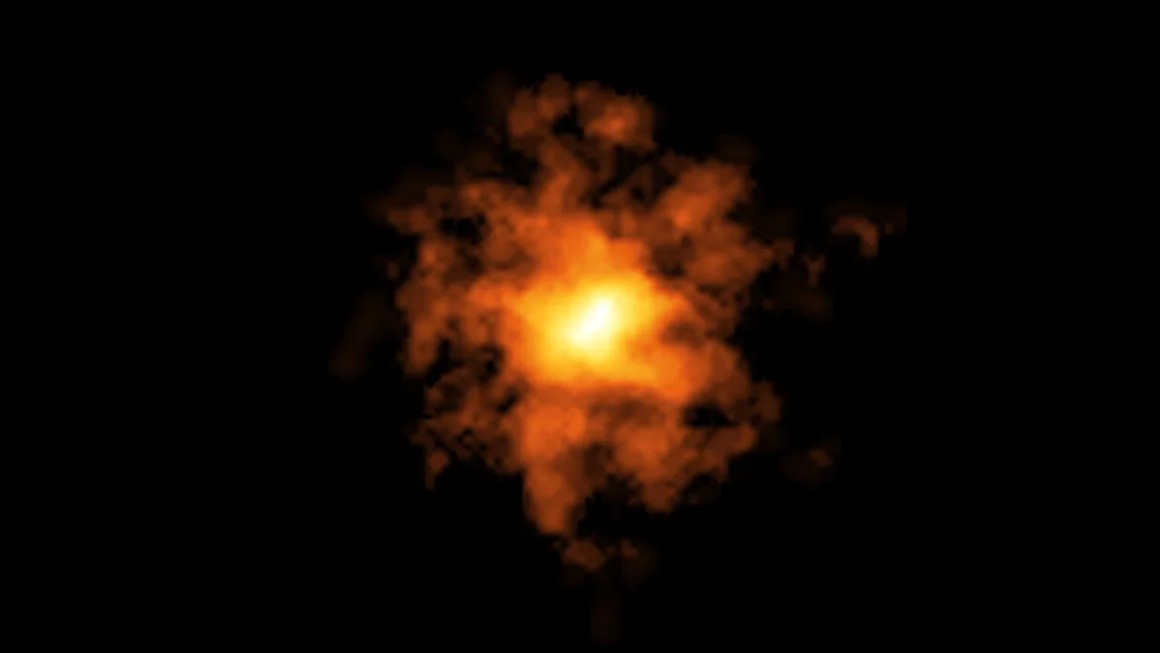Galaxy REBELS-25: Could This Distant Twin of the Milky Way Rewrite Cosmic History?
USA NEWS – Astronomers have made a groundbreaking discovery that could challenge our current understanding of how galaxies evolve. A newly identified galaxy, REBELS-25, bears striking similarities to our own Milky Way, despite being located in a distant corner of the universe. This discovery is particularly significant because, according to current models of galaxy formation, such an orderly galaxy should not exist so early in cosmic history. The team, led by astronomers from Leiden University in the Netherlands, is now grappling with the implications of this unexpected find.
REBELS-25 is far younger than the Milky Way, yet it shares many of the same structural characteristics. Rather than appearing clumpy and chaotic like other young galaxies, REBELS-25 exhibits a smooth, rotation-dominated structure similar to the Milky Way. This contradicts the longstanding belief that early galaxies were much more disorganized, forming their neat, spiral shapes over billions of years. The researchers were able to observe this galaxy using the highly sensitive Atacama Large Millimeter/submillimeter Array (ALMA) telescope in northern Chile, one of the most advanced tools for studying distant objects in the universe.
The light from REBELS-25 has taken about 13 billion years to reach Earth, meaning we are observing the galaxy as it existed just 700 million years after the Big Bang. For a galaxy to have achieved such an orderly structure in that short period of time defies current theories of galaxy formation. “Seeing a galaxy with such similarities to our own Milky Way challenges our understanding of how quickly galaxies in the early Universe evolve,” said Lucie Rowland, the study’s lead author, in a statement. This revelation could lead scientists to rethink how galaxies evolve in the early universe.
One of the most intriguing aspects of this discovery is the possibility that REBELS-25 may have even more complex features than initially observed. Preliminary data hints at the presence of spiral arms, which, if confirmed, would make this the most distant galaxy ever observed with such advanced structures. The research team plans to conduct additional observations to verify whether these features exist, which could further upend our understanding of galaxy formation in the early universe.
Experts outside the research team have weighed in on the significance of this discovery. Andrew Blain, a professor of astrophysics at the University of Leicester, noted that while REBELS-25 is certainly unusual, it doesn’t entirely rewrite our theories. He emphasized the crucial role that ALMA played in detecting this galaxy, as earlier telescopes would not have been able to pick up such faint and distant objects. Blain suggested that further research is necessary to determine whether REBELS-25 is an anomaly or if other early galaxies share its characteristics.
Other astronomers are equally intrigued by REBELS-25’s unexpected structure. Dave Clements, an astrophysics expert from Imperial College London, expressed surprise at the discovery. “The universe back then is thought to be a lot more chaotic, with galaxy interactions and mergers expected to disrupt the relatively fragile structure of a disk,” Clements said. This raises the question of whether REBELS-25 is an exceptionally rare case or if our understanding of early cosmic evolution needs revision.
As scientists continue to study this galaxy, the implications of REBELS-25 could extend beyond this single discovery. If more galaxies like REBELS-25 are found, it would suggest that galaxies in the early universe may have evolved in a much more orderly fashion than previously believed. On the other hand, if this galaxy is a unique case, it could prompt astronomers to explore new possibilities for how isolated galaxies might form and develop in the chaotic environment of the early cosmos. Either way, REBELS-25 has opened a fascinating new chapter in the story of how galaxies, including our own Milky Way, came to be.

